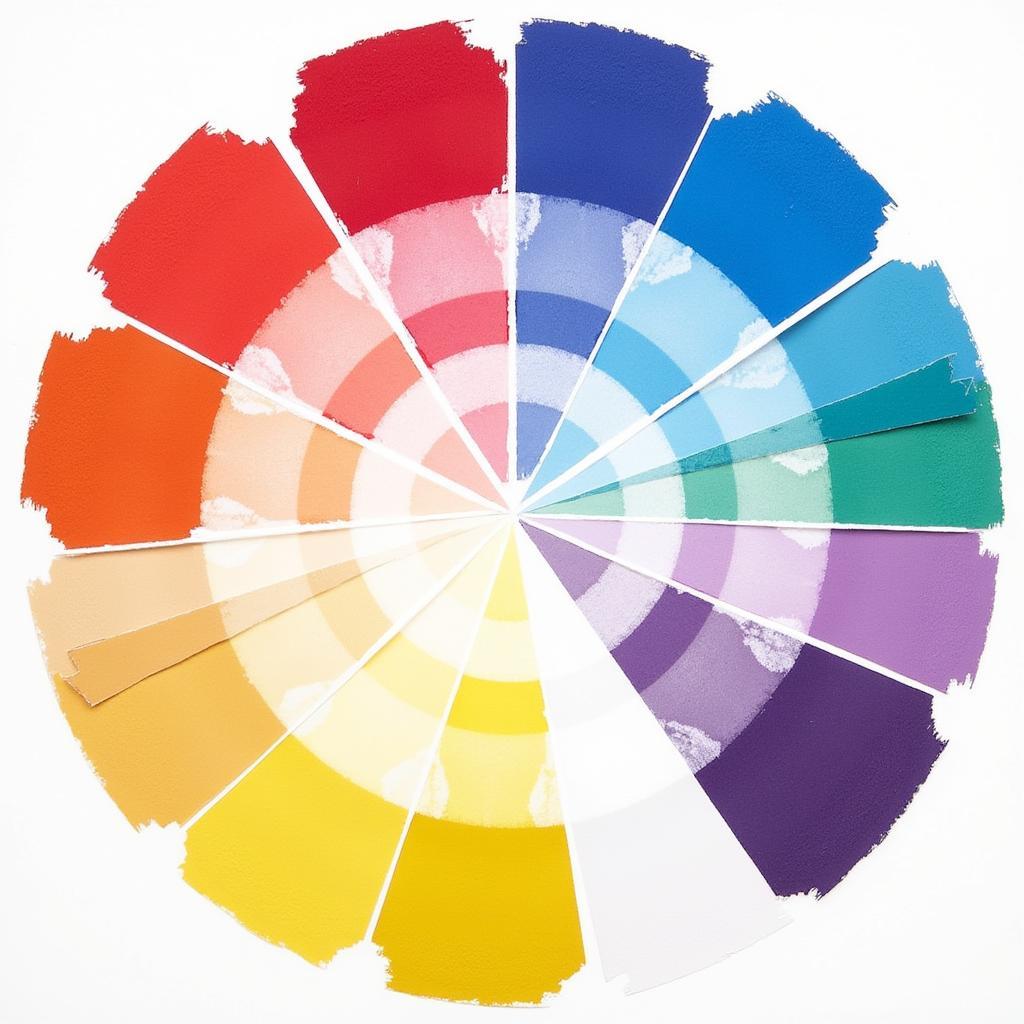Purple, a color often associated with royalty, creativity, and magic, isn’t a primary color. This means it can’t be created by simply mixing other colors together. Instead, purple is a secondary color, born from the beautiful fusion of two primary colors: red and blue.
Understanding the Color Wheel
To truly grasp how to make purple, we need to delve into the world of the color wheel. This essential tool for artists and designers alike visually represents the relationships between different colors.
At the heart of the color wheel lie the primary colors: red, blue, and yellow. These are the fundamental building blocks of the color spectrum. Secondary colors, like purple, green, and orange, emerge when we combine two primary colors.
 Mixing Primary Colors to Make Purple
Mixing Primary Colors to Make Purple
The Magic Ratio: Red and Blue
While the basic formula for purple is red plus blue, the shade of purple you achieve depends entirely on the ratio of these two primaries.
- More Red: Leans towards warmer, red-violet hues like magenta or fuchsia.
- More Blue: Creates cooler, blue-violet shades like indigo or lavender.
Experimentation is key! Play with different ratios of red and blue to discover the vast spectrum of purples waiting to be unveiled.
Factors Influencing Purple Hues
Beyond the red and blue ratio, other factors can subtly influence your purple concoction:
- Type of Red and Blue: The specific shades of red and blue you choose will impact the final purple. For instance, a warm crimson red mixed with a deep ultramarine blue will yield a different purple than a bright scarlet red mixed with a light cerulean blue.
- Medium: The medium you’re working with – be it paint, dye, or even digital software – can influence the vibrancy and saturation of your purple.
- Light: The way light interacts with your purple can dramatically alter its appearance. Natural daylight will reveal the truest shade, while artificial lighting might cast a different hue.
Beyond the Basics: Expanding Your Purple Palette
Once you’ve mastered the art of mixing red and blue, you can further explore the world of purple by incorporating:
- White: Lightens purple, creating softer shades like lilac or mauve.
- Black: Darkens purple, producing deep, rich tones like eggplant or plum.
- Yellow: Adding a touch of yellow, the complementary color to purple, can create interesting muted or grayish-purple shades.
“When working with purple, remember that even the slightest adjustments can significantly impact the final shade. Don’t be afraid to experiment and let your creativity guide you.” – Emily Carter, Color Specialist at Color Box Hanoi
Purple in Design and Decor
Purple, with its diverse range of shades, offers endless possibilities in design and decor:
- A Touch of Royalty: Deep purples like amethyst and royal purple can add a sense of luxury and sophistication to a room.
- Calming Serenity: Lighter purples like lavender and lilac evoke feelings of tranquility and peace, making them ideal for bedrooms and bathrooms.
- Creative Spark: Vibrant purples like violet and magenta can energize a space, inspiring creativity and imagination.
Conclusion
Mixing red and blue to create purple is a journey of exploration and discovery. By understanding the fundamentals of color theory and experimenting with different ratios and additions, you can unlock a universe of purple hues to bring your artistic visions to life.
Remember, at Color Box Hanoi, we’re passionate about helping you navigate the world of color. Whether you’re looking for the perfect purple for your living room or seeking expert advice on color combinations, our team is here to guide you.

